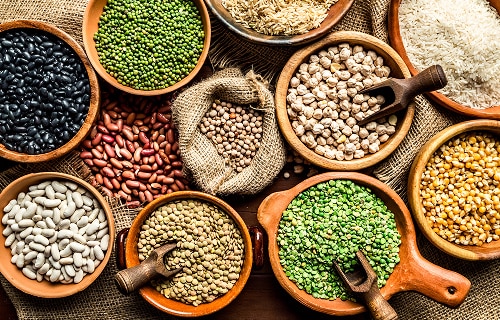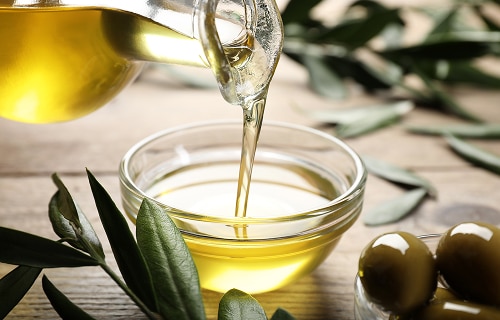
Discover a collection of stories from our authorities on the Longevity Lifestyle, created by ROAR Forward, a collaborative of longevity thought leaders and content creators.
If you’ve ever met a healthy, happy centenarian, you probably wondered about their secret (or more likely, secrets) to a 100+ year life. Turns out, there’s no magic secret—it’s actually lifestyle commonalities that the longest-living people in the world share. That’s what explorer and National Geographic Fellow Dan Buettner and a team from the National Institute on Aging discovered as they crisscrossed the globe studying the habits of the oldest and healthiest people.
Their research uncovered several similarities among super seniors in five areas of the world: Ikaria Greece; Okinawa, Japan; Sardinia, Italy; Nicoya, Costa Rica; and Loma Linda, California—know collectively known as “Blue Zones.” Ultimately, Buettner concluded that one of the biggest keys to longevity is what you eat.
But the Blue Zone Diet isn’t a specific diet. It’s more of a way of eating, and living, gleaned from various cultures and regions around the globe, that can improve health and help you live a longer life, says Marisa Moore, RDN, a registered dietitian nutritionist in Atlanta, Georgia. Here are her tips for bringing the Blue Zones ethos to your plate.
Load up on these…
Vegetables and fruits
Leafy greens like kale, chard and spinach are an excellent source of vitamin A, calcium and several phytochemicals with powerful antioxidant benefits. But greens shouldn’t be your only go-to. Cruciferous vegetables are also incredibly nutritious. Fun fact: a cup of chopped and boiled broccoli contains twice the daily recommended amount of vitamin C.
People in the Blue Zones also eat fruits, though often as dessert. You probably already nibble on berries, apples, citrus and other known power-house options, but you may have overlooked pineapple. This tropical fruit contains bromelain, an enzyme mixture that can help reduce inflammation and improve digestion.

Beans and legumes
It’s estimated that super seniors in the Blue Zones eat at least a half cup of some type of bean every day. “Beans, lentils, peas and chickpeas are common throughout the Blue Zone regions and considered key for longevity,” says Moore. These plant-based sources of protein are also high in fiber, which has known health benefits that include weight maintenance and reducing the risk of cardiovascular disease. Which bean is best? Kidney beans are a great option because the starches they contain are particularly slow to digest, which helps keep your blood sugar levels steady.
Grains
Whole grains (which include quinoa, barley, oats and millet), white and brown rice, and corn, specifically when eaten with protein, fiber and complex carbohydrates (such as lentils and sweet potatoes), help to keep blood sugar levels steady as well. Blue Zone residents also opt for sourdough or whole grain breads, made from wheat, rye or barley, over white bread or baguettes, as these offer a wide range of nutrients including magnesium, which is key for everything from nerve function to blood pressure maintenance.
Nuts
Most centenarians in the Blue Zones eat nuts every day. Pistachios are common in Nicoya, while almonds are popular in Sardinia. These, along with most other nut varieties, are packed with copper, folate, vitamin E, protein and heart-healthy unsaturated fats. Aim for four to six servings of unsalted, dry roasted nuts each week (one serving is roughly a small handful, or two tablespoons of nut butter.) And don’t overlook one of the most nutrient-packed superstars: Brazil nuts. They’re loaded with selenium, a trace mineral that can assist with metabolism support and more, and make a great addition to your trail mix or breakfast bowl.

Healthy fats
Olive oil is a staple in almost all Blue Zones. In Ikaria, Greece, researchers found that middle-aged people who ate about six tablespoons of olive oil daily seemed to reduce their risk of dying by half. Other research has shown that olive oil has a range of benefits thanks to its high levels of antioxidants. When shopping for olive oil, opt for extra-virgin olive oil (EVOO). It’s the highest quality and most nutritious option, since it’s not heat processed (which strips the oil of nutrients). Other types of healthy fats to incorporate into your diet: avocados, flaxseed and chia seeds.
And eat these in moderation…
Meat and fish
Most Blue Zone diets limit meat to just five times a month, focusing instead on fish about twice a week. Choose mid-chain varieties of fish, including trout, snapper and sardines, as these tend not to have the same high levels of mercury found in larger fish.
Dairy
Dairy isn’t off limits, but it should be consumed in small amounts. Researchers have found that people in the Blue Zones tend to eat dairy in the form of fermented products like yogurt and sour cream; goat’s milk and sheep’s milk products are much more prevalent than cow’s milk.
Eggs
For the most part, eggs are often viewed as a side dish, eaten alongside a plant-based meal. Okinawans boil an egg in their soup as a garnish, and Nicoyans fold a fried egg into a corn tortilla to eat with beans, for example.
Explore more longevity lifestyle stories here.